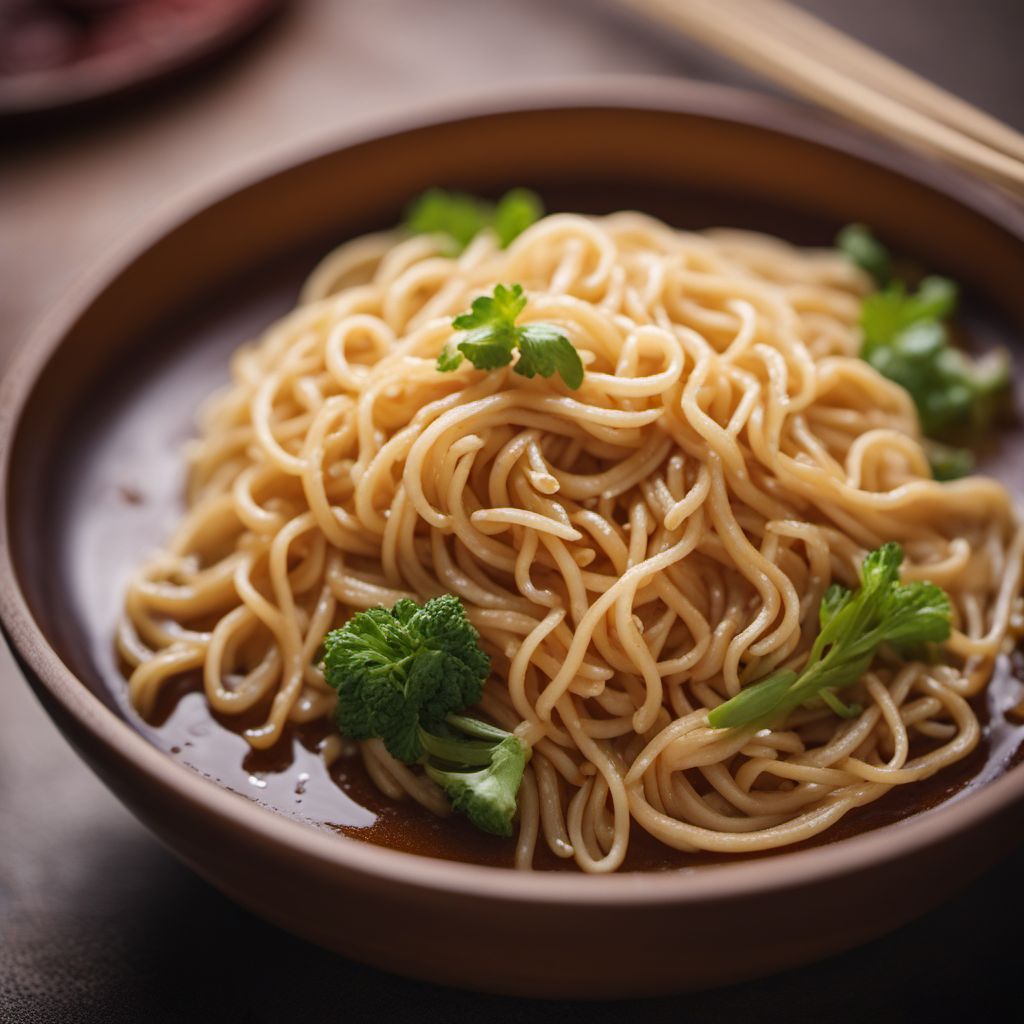
Ingredient
Asian-style noodles other than glass noodles
Exploring the Wonders of Asian Noodles
Asian-style noodles come in various shapes, sizes, and textures, ranging from thin and delicate rice noodles to thick and chewy wheat noodles. They have a neutral taste and a springy texture when cooked, making them perfect for absorbing sauces and spices. These noodles can be stir-fried, boiled, or used in soups, providing a satisfying and filling base for a wide range of dishes.
Origins and history
Asian-style noodles have a rich history that dates back thousands of years. Rice noodles, commonly used in Southeast Asian cuisines, have been enjoyed since ancient times, while wheat noodles have been a staple in Chinese cuisine for centuries. These noodles have cultural significance and are deeply rooted in the culinary traditions of various Asian countries.
Nutritional information
Asian-style noodles are a good source of carbohydrates and provide energy for the body. They are low in fat and contain some protein, making them a suitable option for those looking for a balanced meal. The exact nutritional content may vary depending on the type of noodle and preparation method.
Allergens
Some Asian-style noodles may contain gluten, so individuals with gluten sensitivities or celiac disease should opt for gluten-free options. Additionally, certain noodles may contain eggs or other allergens, so it's important to check the ingredient list if you have specific dietary restrictions or allergies.
How to select
When selecting Asian-style noodles, look for packages that are free from any signs of moisture or damage. The noodles should be firm and not clumped together. For rice noodles, choose ones that are translucent and have a smooth texture. For wheat noodles, opt for those with a uniform thickness and a slightly yellowish color.
Storage recommendations
To maintain the freshness and quality of Asian-style noodles, store them in a cool, dry place away from direct sunlight. Once opened, transfer any unused noodles to an airtight container to prevent moisture absorption. Rice noodles tend to dry out quickly, so it's best to consume them within a few months, while wheat noodles can be stored for a longer period.
How to produce
Growing Asian-style noodles at home is not feasible as they require specialized equipment and processes. However, you can experiment with making your own homemade noodles using traditional recipes and techniques, which can be a fun and rewarding culinary project.
Preparation tips
Asian-style noodles can be prepared in various ways depending on the dish you're making. For stir-fries, soak the noodles in hot water until they soften, then drain and add them to the stir-fry towards the end of cooking. For soups, boil the noodles separately and add them to the soup just before serving. Experiment with different sauces, vegetables, and proteins to create your own unique noodle dishes.
Culinary uses
Asian-style noodles are widely used in Asian cuisines, including Chinese, Thai, Vietnamese, and Japanese dishes. They are commonly found in stir-fries, noodle soups, spring rolls, and cold noodle salads. These noodles provide a versatile base for a variety of flavors and ingredients, allowing for endless culinary creations.
Availability
Asian-style noodles are commonly available in Asian grocery stores, supermarkets, and online retailers. They are cultivated and consumed in various Asian countries, including China, Thailand, Vietnam, and Japan.
More ingredients from this category
Recipes using Asian-style noodles other than glass noodles » Browse all
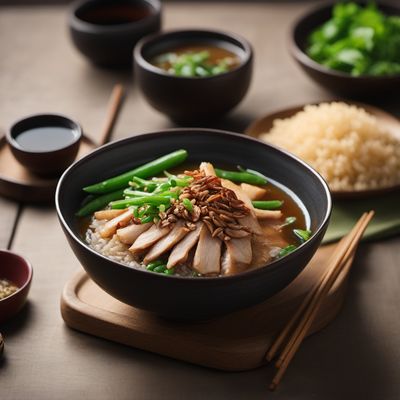
Nagoya-style Takikomi Gohan
Umami-infused Rice Delight: Nagoya-style Takikomi Gohan
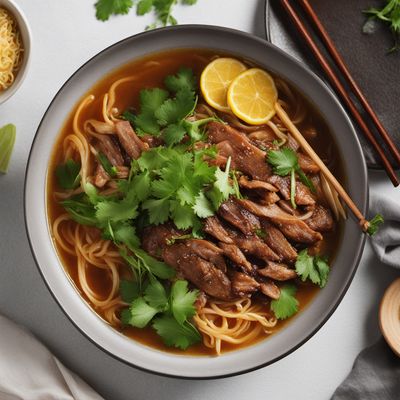
Batak-style Lam Mee
Savory Noodle Delight: Batak-style Lam Mee

Pancit Sotanghon with Shrimp and Vegetables
Savory Delight: Shrimp and Vegetable Pancit Sotanghon
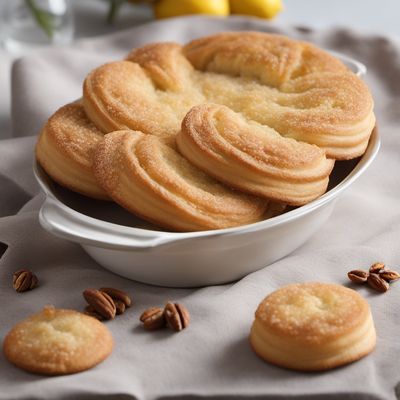
Hurmašica - Sweet Semolina Pastry
Delicious Bosnian Delight: Hurmašica - A Sweet Semolina Pastry to Savor

Greek Honey Walnut Cake
Golden Delight: Greek Honey Walnut Cake
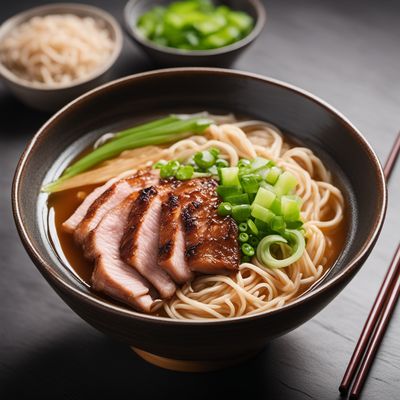
Homemade Hakata Ramen
Savory Delights: Homemade Hakata Ramen - A Bowl of Japanese Comfort

Sopa de Pollo y Fideos - New Nordic Style
Nordic-Inspired Chicken and Noodle Soup

Hungarian Ramen
Goulash Noodle Soup

Indian Chinese Style Torta della Nonna
Spicy Fusion Delight: Indian Chinese Style Torta della Nonna

Matcha Soba with Sesame Ginger Dressing
Green Tea Infused Buckwheat Noodles with Zesty Sesame Ginger Dressing
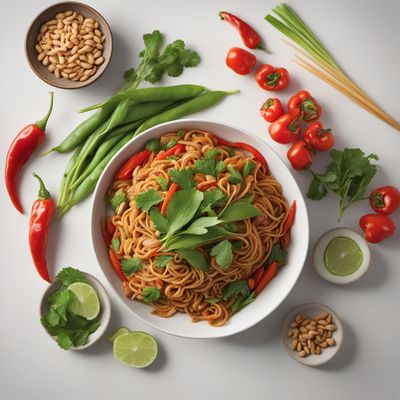
Peanut Noodle Stir-Fry
Wok-tossed Peanut Noodles: A Chinese Buddhist Delight
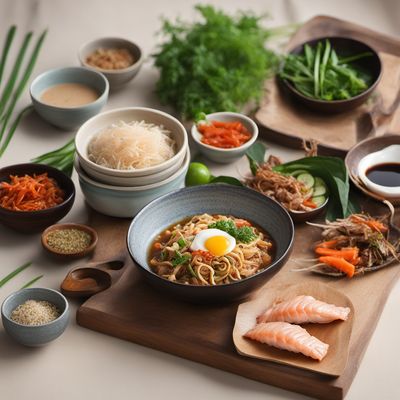
Teochew-style Breakfast Delight
Savor the Flavors of Teochew Cuisine with this Breakfast Delight



